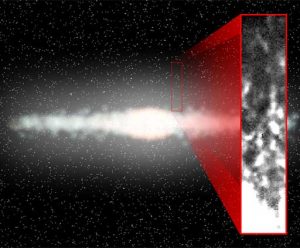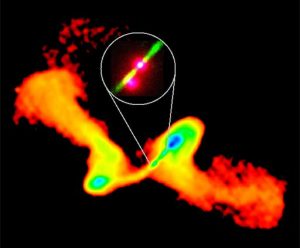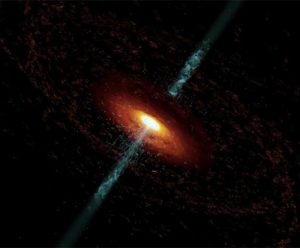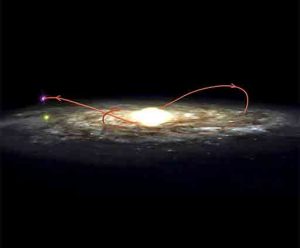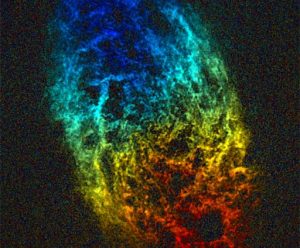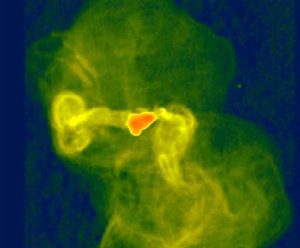GREEN BANK, WV — New studies with the National Science Foundation’s Robert C. Byrd Green Bank Telescope (GBT) have revealed a previously unknown population of discrete hydrogen clouds in the gaseous halo that surrounds the Milky Way Galaxy.
Scientists Detect ‘Smoking Gun’ of Colliding Black Holes
Images from the National Science Foundation’s Very Large Array radio telescope have uncovered compelling evidence that supermassive black holes at the hearts of large galaxies collide when their host galaxies merge.
Supermassive Black Hole Mimics Smaller Cousins
Scientists have caught a supermassive black hole in a distant galaxy in the act of spurting energy into a jet of electrons and magnetic fields four distinct times in the past three years, a celestial take on a Yellowstone geyser.
Ancient Black Hole Speeds Through Galaxy
Astronomers find an ancient black hole speeding through the Sun’s Galactic neighborhood, devouring a small companion star as the pair travels in an eccentric orbit looping to the outer reaches of our Milky Way Galaxy.
Unprecedented Detail of Neighbor Galaxy
Using radio telescopes in the United States and Europe, astronomers have made the most detailed images ever of Hydrogen gas in a spiral galaxy other than the Milky Way.
Spectacular Structure in Distant Galaxy
Researchers using the National Science Foundation’s Very Large Array radio telescope have imaged a spectacular and complex structure in a galaxy 50 million light-years away.






